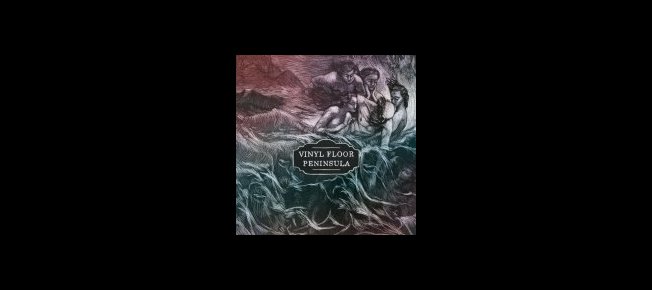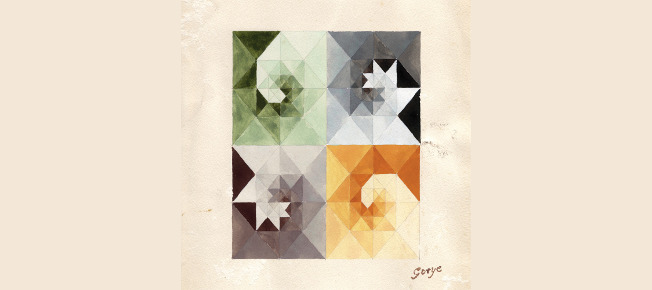Six years ago, I was driving to work listening to the radio when this bizarre song came on. It seemed like a mash-up of The Beatles’ “Sergeant Pepper’s Lonely Hearts Club Band” and Barenaked Ladies’ “One Week,” but with far more swerves and curves. It woke me up more than my cup of mocha java, as my senses seemed to be on some kind of roller coaster ride in a funhouse. It was goofy, it was catchy, it was just plain happy. And on a dreary Monday morning, who couldn’t use a non-caffeinated jolt of happiness to kick start the day?
The song was Tally Hall’s “Good Day,” the single from their debut album Marvin’s Marvelous Mechanical Museum. This visceral album introduced the world to Tally Hall, a band that defies a singular description, but could be understood as a cleaned-up Bloodhound Gang meets BNL: lots of witty lyrics, upbeat rhythms, and an out-of-bounds sense of fun.
The members of Tally Hall are often recognized by their color-coded neckties: Rob Cantor (yellow-vocals/guitar), Zubin Sedghi (blue-vocals/bass), Ross Federman (gray-drums), Joe Hawley (red-vocals/guitar), and Andrew Horowitz (green-vocals/keyboards). The band formed at the University of Michigan in Ann Arbor just a decade ago. Much like The Beatles’ Sergeant Pepper’s Lonely Hearts Club Band album, Tally Hall’s 2005 Marvin’s Marvelous Mechanical Museum (re-released by Atlantic in 2008) should be listened to in its entirety to appreciate its whimsical brilliance. The band has described their genre-bending brand of rock as “wonky rock” or even “fa-blue rock” and perhaps only mashed-up adjectives can describe their mashed-up styles of jazz, lounge, country, psychedelic, funk, soul, and rap which ultimately leads to an album like MMMM, full of quirkiness and charm, and more than a dollop of acid-dropping fun.
The trippiness of MMMM was supported by Tally Hall’s Internet Show in 2008. Borrowing the styles of Flight of the Conchords, Robot Chicken, Kids in the Hall, and The Monkees, Tally Hall produced ten shows aired biweekly on their website that combined skits as short as fifteen seconds, parody commercials, animations, and goofy stories starring themselves.
The ten-minute collages of video reveal that Tally Hall’s comedic writing is generous with wit while sparse on snark. They are the polite boys next door in suburbia, but artsy and fun, borrowing from their collective childhood histories steeped in popular culture as they reference classic reruns, cheesy infomercials, and investigative reporting segments, offering up a pastiche of styles in their skits. Being children of the 80s, television and short video seem like a natural outlet for this group of energetic individuals. To be considered just a band with one creative outlet seems far too restraining for this troop of extraordinary gentlemen.
But their most recent album is exactly that: an exercise in restraint. While this statement did make the cult following of the Michigan band a little nervous, fans seem to be embracing Good & Evil as a classic Tally Hall follow-up to the conceptually brilliant MMMM. And being that it was six years in the making, I think fans are more than just a little bit relieved that Good & Evil has finally arrived.
The opening track “Never Meant To” immediately set the tone for this album. This group has settled into a nest of collective sounds rather than an organized chaos of psychedelia. There is a slight melancholia running through the song, and sometimes it hint at some of their similar Canadian colleagues, such as The Weakerthans. There is a beauty and a sadness in the world of the everyday which surrounds us. And Tally Hall continues their exploration of the strange cosmic physics that comprise our ordinary lives: “See the sun the shadow casts / From all the times I floated past. / See the ocean spinning out / With all the hope and all the doubt.” While this opening track seems like a foray into existentialism, the album does contain much levity.
My favorite track “&” is styled in the mashed-up fashion of Tally Hall’s previous album. The refrain of the song is an enormous list of items: “John & Yoko & dark & light,….” Featuring the expected funky guitars and drums, it is dreamy and fantastical, but anchored by the sing-song rhythm of Joe Hawley’s voice. The conclusion changes gears a bit, pitching the song into an almost swing rhythm before its abrupt conclusion. In a similar style, “You” is largely acoustic, with humming added to the sing-song rhythms. However, it is the raw emotions in the vocals that keeps this song, and most of Tally Hall’s songs, from falling into polished copies of marionette quintets that you might see on amusement park rides. Their entire first album used the arcade hall/mechanical museum/ funhouse motif and its presence is still felt in this paired down album.
Many of the songs borrow from the band’s influences. You can hear the 1980s pop influence in a track like “You and Me,” but it’s not cloying. Upbeat and whimsical, it is grounded by Zubin’s determined bass line. It’s a sturdy track, designed to make you tap your foot in time with the song. “Sacred Beast” features a feverish borrowing of decades of pop influences, including auto-tuning, but the harpsichord and whistling warmly recalls the opening credits of The Partridge Family.
Other songs build on the theme presented in the opening track of the album. “Hymn for a Scarecrow,” for example, questions our everyday existence, cosmos, and everything in it. The quiet beginning builds to a bombastic conclusion that is the trademark of Tally Hall: a controlled chaos in which richly layered sounds and textures seem like they will spiral of out control, but artfully the band reigns in the chaos and gives it structure from which to blossom with brilliance and radiance. It’s a marvelous listening experience.
One of the more striking pieces on the album falls in the middle. “A Lady” recalls the melody of “&” but it sounds more like a tempered Moody Blues recording of “Knights in White Satin.” It’s length is abbreviated, too, getting to the point with no waste. It’s a minute long. “I knew a lady, good & evil / showed me that I was a gentleman. / Wait for the girl to blossom into / colors that grow where you can.” It’s the shortest and most central song on the album, echoing the title and alluding to the magic that Tally Hall creates from its everyday surroundings, that combination of reality and imagination. It’s like Tally Hall grew up watching Mister Rogers’ Neighborhood, but they missed the trolley back to the living room and instead are still hanging out with the eccentric Lady Elaine Fairchild in her spinning carousel of a museum.
“Fate of the Stars” closes the album and it does seem like the exit music at an amusement park. The band knows that they draw their songs from the kitsch of modern life, but this song has much more gravitas. Tally Hall asks the cosmic questions and while they can give advice, our fate like theirs is in the stars. We live, we act, we react, but ultimately we move toward an eventual exit, “trapped in active depart.” Like in MMMM, they bid the listener farewell and hope we enjoyed the show. Come back when you can, for Fate’s fated performers will be here for you.
Good and evil are in everything. They are one in the same, or maybe it depends on how we view it. Tally Hall offers a multi-faceted approach with their latest offering.
Who will adore Tally Hall’s Good & Evil?
- Anyone who has created a Last.fm or Pandora station with the tag They Might Be Giants, Jonathan Coulton, or Ben Folds Five.
- Anyone who loves the humor and wit of the Bloodhound Gang, but needs a proper substitute when mom and dad are visiting.
- Anyone who appreciates the experimental creativity of Oingo Boingo, but listening to the Elfman brothers these days makes them look more old than hip.
© 2011, The Indie Mine. All rights reserved.







Great job on the article and I really like that Good Day video. Guess I’ll have to start listening to these guys.